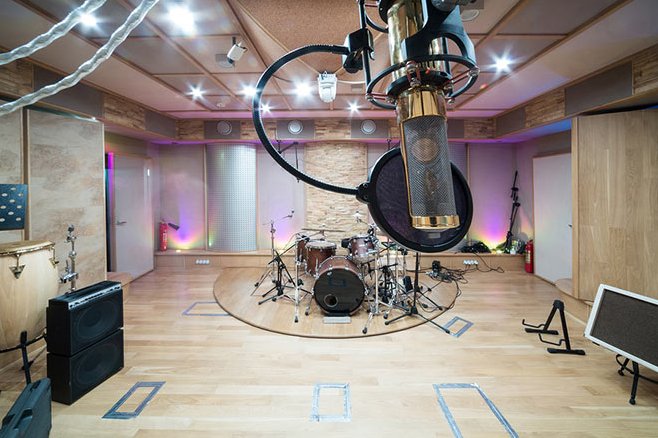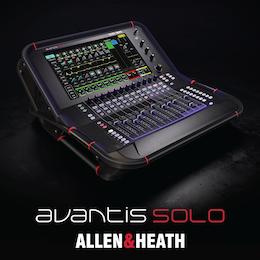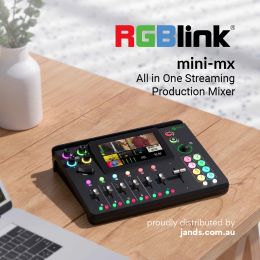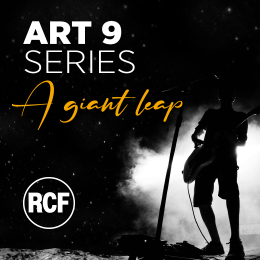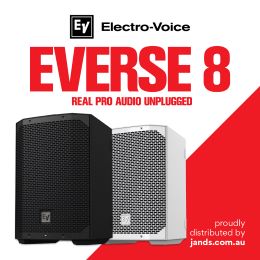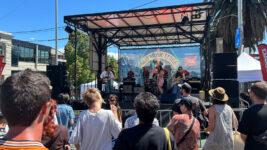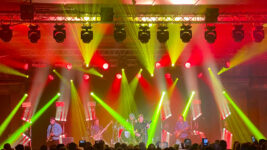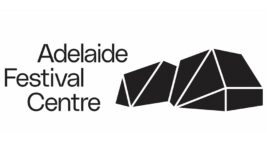Subscribe to CX E-News
Ever wondered why the real estate between your speakers gets so crowded so quickly? It’s not just because there are too many instruments jockeying for position. It’s because everyone is standing shoulder to shoulder at the front of the mix.
Ever thought to let a few people stand back a bit?
Whether you’re recording or mixing, producing or performing, one of the most crucial things to be mindful of during the recording process is that distance equals depth. Above all else, this is arguably what commercial recording studios offer as their greatest asset – large, quiet spaces – that allow producers and artists the freedom to create three-dimensional sounds with nought but walls and mics.
Unfortunately – at least in this respect – the vast majority of 21st century recordings take place in people’s bedrooms and lounge rooms, where the ability to explore this distance principle is compromised, mainly because the spaces are too small, ordinary sounding and corrupted by environmental noise.
To be more specific, what I’m talking about here is the relationship between a sound source, its environment and the microphone (or microphones) used to capture them both. It’s a fairly simple principle, but one that’s put into action less and less frequently to the detriment of many recordings. People are generally content to record things up close these days and worry about the space later by recreating it artificially.
Problem is, the outcome of this approach is never quite the same as when acoustic spaces are incorporated into your recorded sounds from the outset. Artificially replicating the space around a sound later – let alone 100 sounds in a large mix – can become both confusing and impractical.
In reality, what tends to happen with large modern productions where every overdub involving a microphone has been recorded three inches away, is that the mixes ultimately come out sounding processed and unnatural, at least to the extent that they no longer just sound like instruments played in a good acoustic space. This is not a negative trait per se, just an observable fact. It’s only a problem if the outcome was intended to sound like performers recording in a good acoustic space.
Spatial detail and depth are hard to replicate artificially. There’s far more to it than simply sending a sound via an auxiliary send to a reverb or delay. Frankly, most reverbs are hopeless at creating the illusion of genuine space anyway, and typically fail to incorporate even half of what happens to a sound when it’s recorded 40 feet from a microphone.
So if you’re looking to add depth and tangible three-dimensionality to your next masterpiece – as well as engineering and production skills to your CV – look no further than the distance relationship between a mic and its source.
TAPE MEASURE TIME
When a song is recorded with three-dimensional depth in mind, and the different instruments are captured at varying distances from the mics, the results are immediately apparent. Rather than jostling shoulder to shoulder at the front of the mix, the sounds now occupy different spatial depths. And all you’ve done is push up the faders.
All the technical know-how and complexity behind being able to artificially replicate space later has barely been relevant. You’ve simply use the air in the room to generate the sounds you require. Letting nature do what it does best – transform sound – can be a liberating and exciting experience, given the right environment.
All the subtle changes that inevitably occur to a sound’s tone, dynamic range and detail are left to the vagaries of the space itself. You don’t have to necessarily understand how it all happens, only recognise that it does.
Then, as long as you have a basic plan about what sounds will be placed up the back of the soundstage – i.e., far away from the speakers – what sounds will be up close, somewhere in the middle, to the left or to the right and so on, the recording process will start to construct itself.
There will be far less work to do during mixdown because as soon as you push up the faders the sounds will settle into their natural place on the soundstage like never before, because you orchestrated their positions during the recording process. If you get it right, the results can be pure magic.
EXPLORE THE SPACE
If the opportunity arises any time soon, try experimenting with a song production from the ground up using the distance equals depth relationship from the get-go.
If you have nowhere to record, find a space somewhere. It could be an abandoned church down the road, the infrequently utilised local hall, a surf lifesaving club… or frankly, all three. There are spaces everywhere, and as soon as you go looking for them they will appear in front of you.
The next thing to do is experiment with the distances between sound sources and mics. Listen to the space you’re in and get to know what recording something from 4, 14 and 40 feet sounds like.
The vocals in your experimental recording may be six inches away, the backing vocals a combination of two feet, four feet and 40 feet away. The drums might still have some close mics on them but also have room mics in front them that are placed 25 feet away. The tambourine overdub might be recorded from say 12 feet away (not six inches), and the electric guitars recorded with a combination of a close cabinet mic and a room mic that could be anything from 10 to 100 feet away, depending on how epic you want the echo to sound.
Once you have a plan like this in place for the basic instrumentation, the recording itself will then tend to guide you through how and where to record the remaining parts. You don’t have to be a genius with the foresight of a wizard to predict the precise distance for every instrument. You just need to plan a few things from the get-go and then trust your instincts after that.
This is one of the great benefits of applying the distance equals depth principle to your mic technique. The space in the song doesn’t need to be imagined or mocked up temporarily. It’s immediately recorded and you’ll be able to hear where any extra overdubs need to be placed in the soundstage because the song itself will make that clear to you.
EACH WAY BET, ANYBODY?
When experimenting with the distance equals depth principle there’s always the temptation to have your cake and eat it too by placing close mics in front of everything at the same time. Though you might have decided to record that big backing vocal 50 feet from the mic, you’ve also recorded a close mic as a safety measure.
There are two schools of thought about this idea. The first tells you that you should have faith in your decisions and resist the temptation to have a bet each way on your choice of mic position. The other school warns you against betting your house on being able to choose the correct spatial position each and every time, and argues that a close mic is your safety net against disaster.
I’m torn about what to advise here. I think as you grow more confident about utilising spaces and break free of the temptation to always record things from point blank range, you tend to get the results you want quickly and the need for backup mics becomes a genuine waste of time and effort.
Moreover, the longer you persist with the each way bet principle, the slower your progression will be towards understanding how the technique works. I think diving in the deep end is probably more effective and educational than having two bob each way, but I can also see how, in some circumstances, a backup plan might be wise.
Once you start recording with depth in mind, not just detail, you may have the same epiphany I had 25 years ago. All of a sudden I realised how all those great Beatles and Led Zeppelin recordings were made. They recorded the space, not just the instrument, and the further back they wanted a sound to seem, the further back the mic was placed. Easy peesy.
Subscribe
Published monthly since 1991, our famous AV industry magazine is free for download or pay for print. Subscribers also receive CX News, our free weekly email with the latest industry news and jobs.


